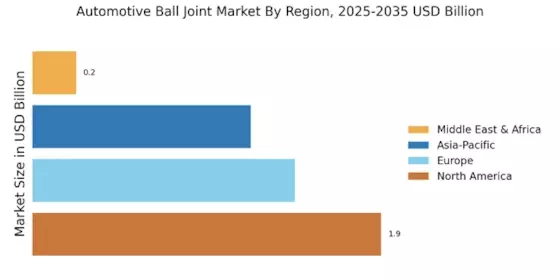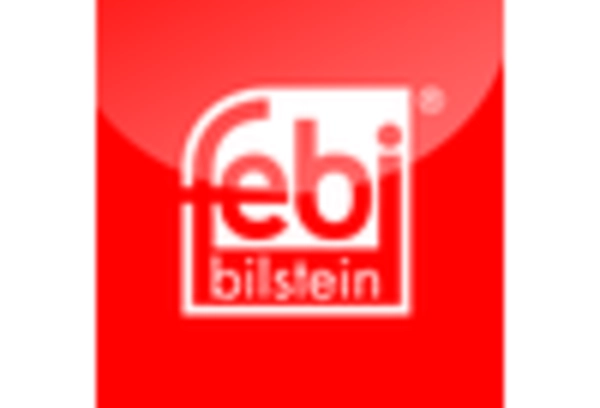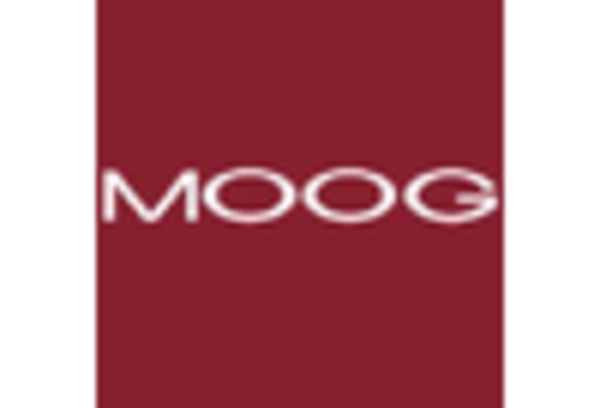Rising Vehicle Production
The automotive industry is witnessing a surge in vehicle production, which directly influences the Automotive Ball Joint Market. As manufacturers ramp up production to meet consumer demand, the need for high-quality components, including ball joints, becomes paramount. In 2025, vehicle production is projected to reach approximately 90 million units, indicating a robust growth trajectory. This increase in production not only drives demand for ball joints but also encourages manufacturers to innovate and enhance their product offerings. Consequently, the Automotive Ball Joint Market is likely to experience significant growth as automakers seek reliable and durable components to ensure vehicle performance and safety.
Growing Aftermarket Segment
The aftermarket segment for automotive parts is expanding, which has a profound impact on the Automotive Ball Joint Market. As vehicles age, the need for replacement parts, including ball joints, becomes more pronounced. In 2025, the aftermarket for automotive components is expected to account for over 40% of the total market share. This trend is driven by an increasing number of vehicles on the road and a growing awareness among consumers regarding vehicle maintenance. As a result, the Automotive Ball Joint Market is poised to benefit from this shift, as more vehicle owners seek to replace worn-out components to maintain optimal vehicle performance.
Expansion of Electric Vehicle Market
The expansion of the electric vehicle (EV) market is poised to have a transformative effect on the Automotive Ball Joint Market. As more consumers opt for electric vehicles, the demand for specialized components, including ball joints designed for EVs, is likely to increase. In 2025, the EV market is projected to grow by over 25%, creating new opportunities for manufacturers to develop innovative ball joint solutions tailored to the unique requirements of electric vehicles. This shift not only diversifies the product offerings within the Automotive Ball Joint Market but also encourages manufacturers to invest in research and development to meet the evolving needs of the automotive landscape.
Regulatory Compliance and Safety Standards
The automotive sector is increasingly subject to stringent regulatory compliance and safety standards, which significantly influence the Automotive Ball Joint Market. Governments worldwide are implementing regulations aimed at enhancing vehicle safety and performance. In 2025, it is expected that compliance with these regulations will drive demand for high-quality ball joints that meet safety standards. Manufacturers are compelled to invest in research and development to ensure their products adhere to these regulations, thereby fostering innovation within the Automotive Ball Joint Market. This focus on safety not only protects consumers but also enhances the reputation of manufacturers who prioritize quality.
Technological Innovations in Manufacturing
Technological advancements in manufacturing processes are reshaping the Automotive Ball Joint Market. Innovations such as automated production lines and advanced materials are enhancing the quality and durability of ball joints. In 2025, it is anticipated that the adoption of these technologies will lead to a reduction in production costs by approximately 15%, making high-quality ball joints more accessible to manufacturers. This shift not only improves the overall performance of vehicles but also aligns with the industry's focus on sustainability and efficiency. As a result, the Automotive Ball Joint Market is likely to see increased competition and a wider range of product offerings.


















Leave a Comment